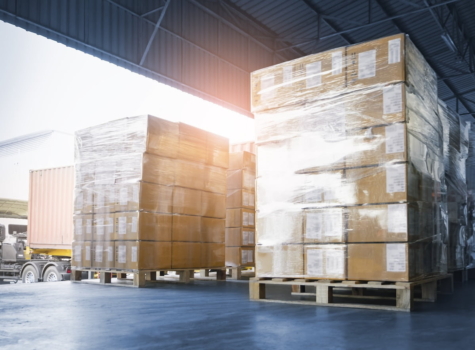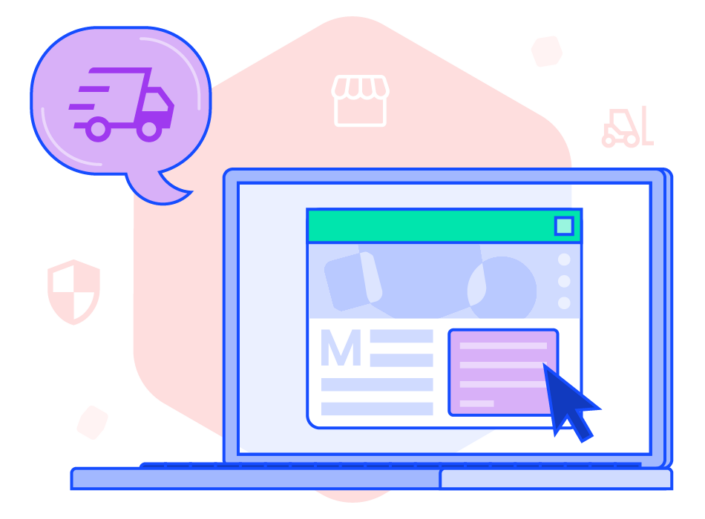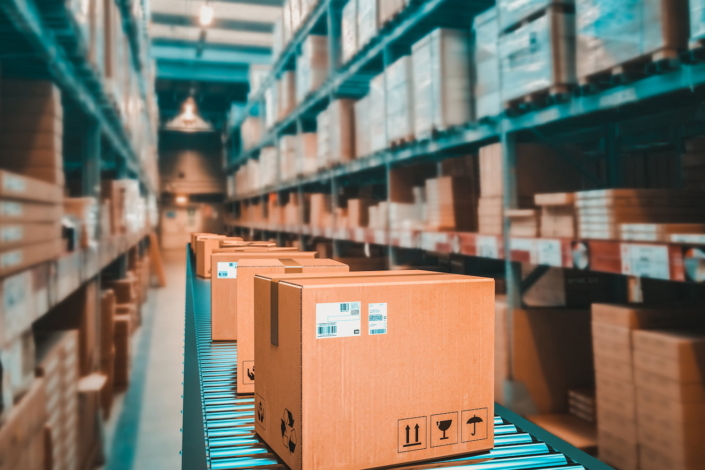Looking for a way to save money on freight shipping? If your shipments aren’t large enough to fill a large shipping container or truck, you can use consolidated freight to your advantage. Here’s what you need to know.
What is consolidated freight?
Consolidated freight, also known as consolidated shipping or cargo consolidation, is a shipping process that combines goods from multiple businesses into a single shipment. The goods are transported as part of the same load, and when they reach their destination, they’re deconsolidated and sent for last-mile delivery.
When multiple LTL (less-than-truckload) or LCL (less-than-container load) shipments are combined, every business involved can access lower shipping rates and maximize efficiency. For example, a pharmacy might use consolidated shipping by partnering with other businesses to combine temperature-sensitive shipments, reducing costs for all parties.
Consolidated freight transportation methods
Consolidated freight is commonly used to ship goods via air, ocean, and ground. Each of these methods has pros and cons, with tradeoffs between delivery speed and cost.
- Air. Air is the fastest consolidated freight shipping method, but it’s also the most expensive and produces the most carbon dioxide.
- Ocean. When sending goods internationally, ocean shipping is more affordable than air. This consolidated freight method is best for large goods.
- Ground. Ground shipping is the most cost-effective way to transport freight, but it generally has the longest delivery times.
LTL vs. LCL vs. FTL shipping
LTL (less than truckload) shipping involves combining multiple shipments from different businesses into a single truckload, allowing each business to pay only for the space they use.
With FTL (full truckload) shipping, on the other hand, an entire truck is dedicated to a single shipment. FTL is ideal for larger shipments that require more space, while LTL is perfect for smaller shipments that don’t require an entire truck to themselves.
Less than container load (LCL) shipping is similar to LTL, with both methods combining multiple shipments into a single load to optimize efficiency and cost-effectiveness. They simply differ in the mode of transportation; LTL refers to trucking, while LCL refers to maritime shipping.
How consolidated freight can benefit your business
Consolidated freight shipping offers great benefits, including cost savings, risk reduction, and increased flexibility.
- Cost savings. Consolidated freight shipping allows you to combine shipments with those of other businesses, only paying for the space your goods take up. This drives down shipping costs per unit and often gives you access to reduced shipping rates.
- Reduced risk of damage. Securely packing goods together in consolidated shipments minimizes the risk of damage during transit, as items are less likely to shift.
- Lower carbon footprint. More consolidated shipments means fewer trucks on the road, planes in the air, and ships on the sea. This helps minimize the carbon emissions associated with logistics, making consolidated freight an excellent way to reduce your environmental impact.
- Streamlined delivery process. Combining shipments allows for better route optimization, which leads to faster transit times and improved overall efficiency.
- Increased customer satisfaction. The benefits already discussed all contribute to one important outcome: increased customer satisfaction. When you transport goods quickly and cost-effectively (and keep them safe from damage), customers will be happy with the delivery experience and more likely to order again.
Common consolidated freight challenges
Along with benefits, consolidated freight comes with challenges, including potential delays and coordination difficulties.
- Complex coordination. Managing communication and coordination with multiple shippers and carriers can be complex, leading to potential issues such as miscommunication or missed pickups. It’s the shipper’s responsibility to be aware of the factors involved with consolidated freight, including shipment volume and dimensions, delivery times, and pricing.
- Carrier selection. If don’t work with a partner to coordinate consolidated shipping, you’ll need to handle the details yourself. Finding a carrier that will carry consolidated shipments can be tricky—and when you do, you need to make sure you’re getting a good price. A multi-carrier shipping platform can help simplify things.
Understanding the consolidated freight process
How do you ship with consolidated freight? Let’s review how the process works from start to finish.
Planning and coordination
First, businesses plan their shipments and coordinate with logistics partners, such as third-party logistics providers (3PLs) or freight brokers, to arrange for consolidation. During this stage, they may use load planning software to crate and palletize goods as efficiently as possible.
Partners gather information on shipments, including their volume, characteristics, destinations, and delivery date requirements, and find compatible loads to combine. They also select the appropriate mode of transportation—air, ocean, or land—and identify the best consolidation point.
Consolidation and loading
After goods are picked up from individual shippers, they’re taken to a designated consolidation point. There, shipments are sorted, grouped, and loaded onto trucks, containers, or pallets for transport to their final destinations. Efficient consolidation and loading practices help maximize space utilization and minimize transportation costs.
Shipping
Next, consolidated shipments are transported to their destinations, either directly or via intermediate hubs. Throughout the shipping process, businesses can track the movement of their shipments in real time, which allows them to promptly address potential issues or delays.
Delivery and unloading
When trucks arrive at their final destinations, consolidated shipments are unloaded, deconsolidated, and distributed to recipients or fulfillment centers. Businesses coordinate with receivers or warehouse operators to ensure smooth delivery and efficient unloading of goods.
How much does consolidated freight shipping cost?
The cost of consolidated shipping depends on several factors, including the following:
- Freight class and weight. Heavier shipments and higher freight classes typically cost more.
- Distance and route. Longer distances and less common routes usually increase costs.
- Carrier and service level. Different carriers have varying pricing, and expedited options cost more.
- Additional fees. Things like liftgate service, inside delivery, or residential delivery add to the price./
Simplify consolidated freight shipping with the right technology
As you’ve seen, consolidated shipping is a cost-effective, eco-friendly shipping method for loads that don’t require an entire truck or shipping container. But managing the consolidation process can be challenging, especially if freight shipping isn’t your business’s primary focus.
The EasyPost Enterprise Shipping solution can help. The platform, which is available on-premise and through the cloud, streamlines parcel, LTL, and FTL shipping and comes with the following capabilities:
- Sub-second shipment processing
- Compliant carrier integrations
- Pre-built integrations into some of the most popular ERP, OMS, and WMSs




